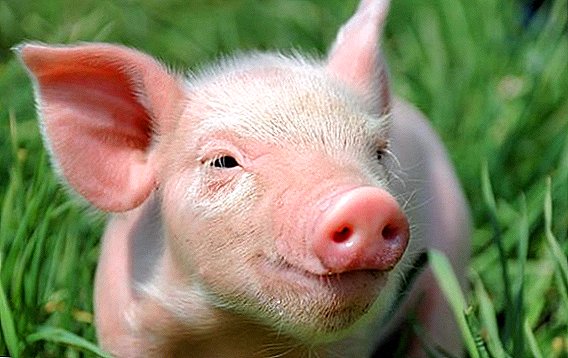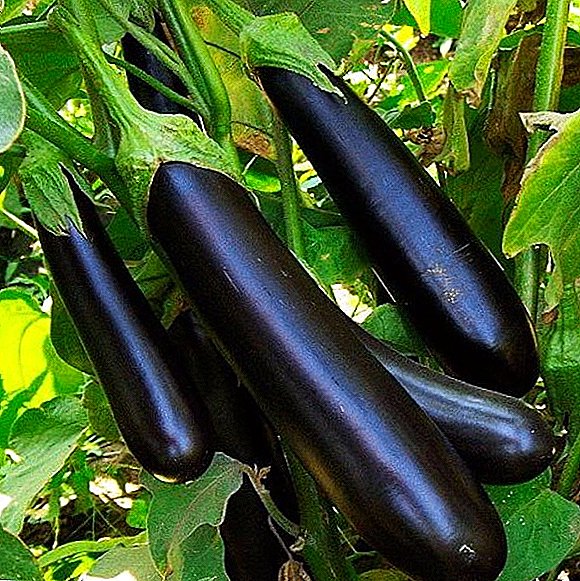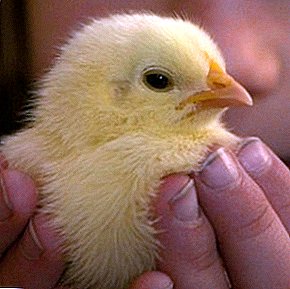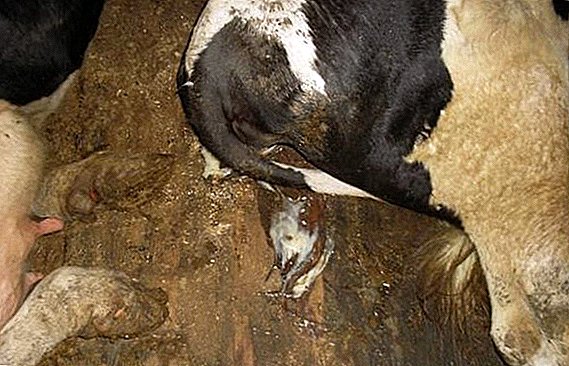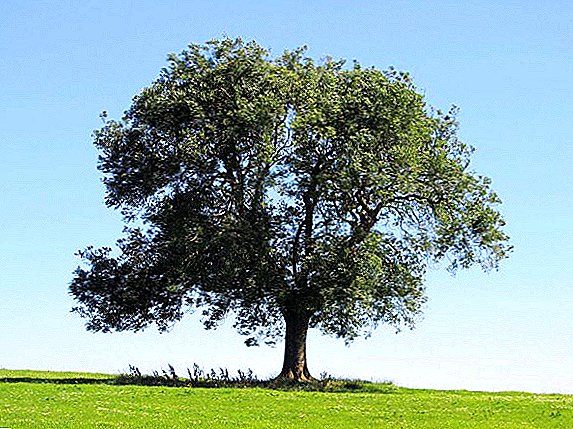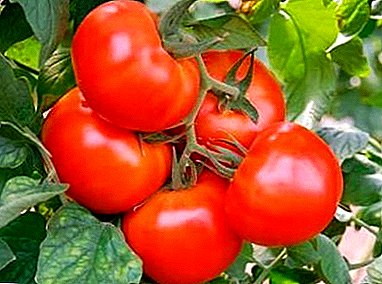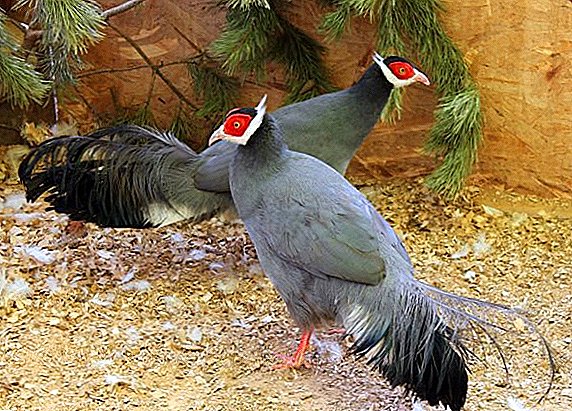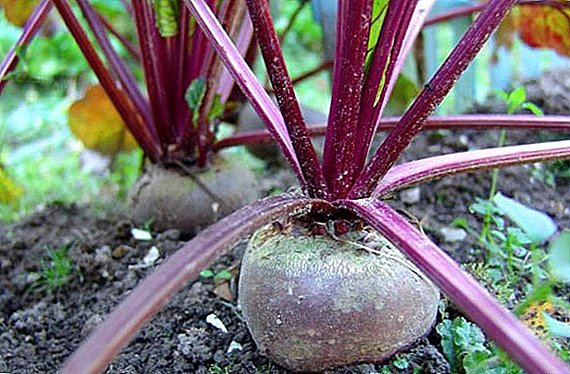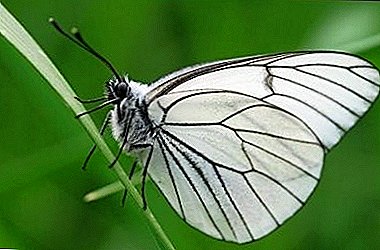
Hawthorn butterfly is often called a cabbage, but it is not. Although they belong to the same family, they are two different pests. The butterfly itself does not bring any harm to the garden.
Real danger for apple, pear, hawthorn, cherry or plum represent her caterpillars. What is this pest and how does it look?
Description of the butterfly-haw
The hawthorn butterfly is a rather large winged insect that feeds on the nectar of flowers. The wings of the butterflies are white, with black veins, spanning about 6.5-7 cm. Most favorable condition for their development is warm weather with a lot of rain. Most often, these butterflies can be found near small bodies of water, in sunny, open places.
Large the threat for garden represent caterpillars haws They are small, about 5 cm long, gray, with black and dark orange stripes, covered with small fluffy hairs. At one time, the butterfly can lay 400-500 eggs, of which the harmful caterpillars appear.
A photo
You can visually familiarize yourself with the hawthorn butterfly in the photo below:





Development
For wintering, the caterpillars make their nests from damaged dry leaves, weaving them with cobwebs. These nests are clearly visible on the branches after leaf fall. If they are not destroyed in time, then in early spring the caterpillars leave their "houses" and begin to destroy the buds and leaves of the plant.
The period of pupation of the caterpillars occurs at the beginning of the formation of the fruits (late May – early June). The pupae have a greyish yellow color and are located directly on the trunk or bark of tree branches. In this form, they are about 15 days, after which butterflies appear.
Butterflies feed mainly on nectar of weed plants, therefore it is very it is important to carry out weeding in a timely manner in the garden.
The emerged butterflies lay eggs on the top of the leaves.
Quite quickly caterpillars come out of these eggs, and, after about a month, having destroyed most of the leaves, again arranged for the winter in the nest of leaves.
Close species of Hawthorn
Three of the most common pest butterflies in our latitudes belong to the same family of Blyanok:
- hawthorn;
- cabbage butterfly;
- repnitsa.
They are often confused because of almost the same appearance. However, the caterpillars of these butterflies feed on different plants. If the Hawthorn can be found only on fruit trees, then the repn and cabbage maw, mainly on vegetable crops.
Geographical distribution
 The habitat of such a butterfly is quite extensive. It occurs not only in Russia, but also in Asia, Africa and Europe.
The habitat of such a butterfly is quite extensive. It occurs not only in Russia, but also in Asia, Africa and Europe.
Most often, this pest prefers to settle in the gardens and meadows of the Non-Black Earth Region or Polesye, near water bodies.
The most favorable climate for haws is high temperature and humidity.
Harmful butterfly
Caterpillars feed not only on leaves, but badly damage buds and flowers fruit tree. Even one such caterpillar is able to completely eat about 20-30 leaflets per day. Having destroyed the leaves on one tree, the caterpillars move to another.
In one season, they can damage more than 30% of all leaves of an apple or pear tree. If you do not start the fight against this pest in time, the tree that has lost most of its foliage weakens and becomes highly susceptible to disease and frost.
Control and prevention measures
To get rid of butterfly haws it is necessary, first of all, destroy all nestsin which caterpillars winter. They are clearly visible after the foliage completely falls. They can be simply collected or cut along with affected dry branches. When the caterpillars have already appeared, they are shaken off early in the morning on the litter and burned.
You can just early in the morning or in the evening, collect butterflies from the flowers from the flowers.
In the spring, at the very beginning of flowering, you can process trees special insecticides. For example, karbofosy (60 grams per bucket of water), chlorophos(20 grams per bucket of water) or benzophosphate (2 l / ha). Spraying is also helpful. Spark. Before the appearance of the kidneys can be used nitrafen.
Not bad cope with the destruction of caterpillars and bacterial preparations: Dendrobatsillin, Dipel or Entobakterin (2 treatments at weekly intervals). These microbial insecticides are not very toxic to humans, animals, or birds, but are effective in controlling pests.
 Many gardeners use proven folk remedies to combat the caterpillars of the Hawthorn. You can use a spraying tree decoction of wormwood.
Many gardeners use proven folk remedies to combat the caterpillars of the Hawthorn. You can use a spraying tree decoction of wormwood.
To do this, 600-700 grams of dried grass is poured with a bucket of water, insisted for a day, then boiled for half an hour, filtered and added another bucket of water.
The resulting broth is carefully treated wood, preferably early in the morning.
Another good tool is considered solution of superphosphate and potassium chloride. To prepare it, 10 grams of superphosphate is diluted in a bucket of water, 5 grams of potassium chloride is added, and they are drawn for 2 days. Conduct a regular spraying of the affected tree every 10 days.
You can carry out pollination of the tree with powder from dried flowers of tansy.
Very effective, but no less time consuming, will processing apple or pear infusion tobacco. On a bucket of hot water take 500 grams of shag and insist for two days. Then filtered, add another bucket of water, 100 grams of crushed soap and the infusion is ready.
Within two to three years, the active reproduction of the butterfly stops on its own. But during this period it can cause considerable damage. Therefore, it is important to start the fight against this pest in time to save your garden and always have a good harvest.


